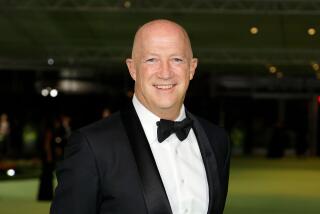Dull But Safe Becomes Rule for Today’s Ads
During a recent editorial meeting at Advertising Age, writers and editors of the trade magazine attempted to select America’s “Agency of the Year.” After some uninspired debate, there was stunned silence when one writer posed, “What happens if I don’t vote for anyone?”
Bingo.
For the first time since it began handing out the honors in 1973, the magazine couldn’t find a winner in 1990. “In giving an award like this, we felt we should be able to write about advertising that moved the needle,” said editor Fred Danzig. “In a year when no advertising stood out, we decided to pass.”
The decision by Advertising Age clearly illuminates the fallout of the tough financial problems shared by agencies and their clients: dull advertising. Breakthrough concepts such as compulsive fibber Joe Isuzu, the rambling Eveready bunny and Nike’s clever series of Bo knows ads, were nowhere to be found in 1990. Nor are they anywhere to be seen so far in 1991. Few can recall a time when ads have shown so little creativity.
Last week, for example, judges for the most prestigious advertising competition on the West Coast--the Belding Awards--were so unimpressed with the creative work they saw from dozens of agencies that they finally awarded the top prize to a client that created its own ads.
A TV ad campaign created in-house by ABC to promote the “Twin Peaks” series won the Belding “Sweepstakes” award.
“There weren’t the big ideas this year that we’ve seen in the past,” said John Hirschboeck, president of Team One Advertising and chairman of this year’s Belding Awards. That may be why the Belding judges handed out 40% fewer prizes this year than last year.
But it isn’t just the agencies that are responsible for the creative drought. Many advertisers are trying to save money by recycling old ads. “An agency can have the greatest idea in the world, but if an advertiser won’t pay for a new commercial, no one will ever know,” said Dave Vadehra, president of the New York research firm Video Storyboard Tests.
With clients cutting back on advertising--or eliminating it altogether--many agency executives are singularly focused on retaining business. “That takes their eyes off the job of creating great advertising,” said Ad Age’s Danzig.
In his many years of researching advertising, Vadehra says he can’t remember any when creativity was as abysmal as it was in 1990--and so far in 1991. “Because of all the problems in the industry,” said Vadehra, “every agency just wants to play it safe.”
“When times are grim in corporate America, risky advertising is defined as anything that is interesting, human or entertaining,” said Steve Hayden, chairman of BBDO/Los Angeles. “Therefore, you end up with advertising that is uninteresting, inhuman and dull.”
Even senior officials at the American Assn. of Advertising Agencies, the industry trade group, grudgingly concede that there is little creativity coming from agencies. “There has not been much breakthrough work over the past year,” said Burtch Drake, executive vice president of the trade group. “But the industry is not falling apart.”
The industry is, however, in the midst of an embarrassing creative slump fueled by weak client spending. Although final 1990 ad spending figures are still unavailable, executives estimate that ad spending grew only 1% to 2% last year compared to double-digit annual increases during the later half of the 1980s.
Lee Spikes Offers for Spots
Spike Lee’s commercial slate is full.
The director, actor and TV commercial star says he’ll direct some more ads for Levi’s and Nike--but that’s it. And he has turned down offers to direct and appear in several beer spots.
“I can’t do commercials with executives telling me they don’t like the shape of the potato chip.”
Making Ads as Easy as ABC
The winning ad that walked off last week with the West Coast’s top advertising prize cost about 5% of the average price for a television commercial.
The 1990 Belding Awards sweepstakes prize went to ABC Television’s in-house promotions unit for a series of spots publicizing the network’s “Twin Peaks” series.
In all, a dozen spots were shot for less than $10,000 each--compared to about $200,000 for the average television ad.
Ideas for the campaign came from letters written to ABC after it ran a small newspaper ad asking viewers for theories on who killed Laura Palmer. Some responses were used in the ads.
Briefly . . .
Grey Advertising’s L.A. office has won the $4-million Roman Meal Co. ad business . . . The Hollywood radio and TV commercial production company Chuck Blore & Don Richman has changed its name to Chuck Blore & Bill McDonald . . . With 10 finalists to be selected soon, more than 7,500 hopeful hunks entered the “C&R; Man” contest to appear in a future C&R; Clothier commercial . . . CNN reporter Peter Arnett will be guest speaker at the Los Angeles Ad Club’s monthly luncheon meeting at noon on April 19 at the Beverly Hilton.


